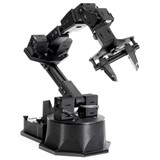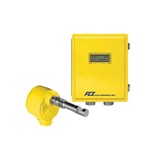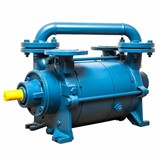In today's fast-paced industrial landscape, efficiency and productivity are key factors for success. One area where automation has made significant strides is in the realm of material handling and logistics. Robotic palletisers have revolutionized the way goods are stacked, sorted, and transported, offering a myriad of benefits to various industries. In this article, we will delve into the industrial applications of robotic palletisers in Sydney and explore how they are enhancing operational processes across different sectors.
Manufacturing Industry
The manufacturing industry relies heavily on the efficient movement of goods within production facilities. Robotic palletisers have emerged as invaluable assets, streamlining the palletizing process and reducing manual labor. These intelligent machines are capable of handling heavy loads, accurately placing products on pallets, and securing them for transportation. By automating palletizing tasks, manufacturers can achieve higher production rates, improved product quality, and reduced labor costs. Additionally, the precision and consistency offered by robotic palletisers ensure minimal errors and product damages.
Food and Beverage Sector
The food and beverage sector necessitates strict adherence to hygiene and safety regulations. Robotic palletisers excel in meeting these requirements by offering a hygienic and contamination-free solution for handling consumable products. These machines are specifically designed to work in cleanroom environments, preventing any risk of contamination. They can handle a wide range of packaging formats, including cartons, crates, and even delicate food items. With advanced vision systems and customizable grippers, robotic palletisers can accurately sort and stack products, ensuring the integrity and quality of the packaged goods.
Pharmaceutical and Healthcare
In the pharmaceutical and healthcare industries, precision and reliability are paramount. Robotic palletisers play a crucial role in maintaining product integrity and meeting stringent quality control standards. These machines are equipped with state-of-the-art technology, such as advanced sensors and vision systems, enabling them to handle delicate medical supplies, medications, and equipment with utmost care. Robotic palletisers ensure proper alignment, stacking, and labeling of pharmaceutical products, facilitating efficient distribution and minimizing the risk of errors or damage during transportation.
Logistics and Warehousing
Efficient material handling and storage are critical in logistics and warehousing operations. Robotic palletisers offer unmatched speed, accuracy, and flexibility in these environments. They can seamlessly integrate with warehouse management systems, enabling real-time tracking and optimizing inventory management. With their ability to handle diverse packaging sizes and shapes, robotic palletisers maximize space utilization, leading to improved storage capacity. Moreover, these machines can autonomously navigate warehouse layouts, reducing the need for human intervention and increasing overall operational efficiency.
Retail and E-commerce
In the ever-expanding world of retail and e-commerce, order fulfillment and rapid delivery are paramount. Robotic palletisers have transformed the packaging and shipping processes, enabling retailers to meet customer demands effectively. These machines can quickly assemble and stack orders, ensuring faster order processing times. By automating the palletizing tasks, retailers can streamline their supply chain, reduce order errors, and accelerate the dispatch of goods. This ultimately translates into improved customer satisfaction and loyalty.
Robotic Palletisers in the Food and Beverage Industry: Applications and Benefits
The food and beverage industry is one of the most dynamic and demanding sectors, requiring efficient and hygienic processes to meet consumer demands. Robotic palletisers have emerged as a game-changing technology in this industry, revolutionizing the way products are stacked, sorted, and transported. In this article, we will explore the applications and benefits of robotic palletisers in the food and beverage industry, highlighting their significant contributions to improving operational efficiency, maintaining product integrity, and ensuring food safety.
-
Enhanced Food Safety and Hygiene:Food safety and hygiene are of paramount importance in the food and beverage industry. Robotic palletisers offer a hygienic solution for handling consumable products. These machines are designed to meet stringent cleanliness standards, making them ideal for cleanroom environments. They are constructed using materials that are resistant to bacteria and can be easily sanitized. By minimizing human contact and reducing the risk of contamination, robotic palletisers ensure that the packaged food and beverage products meet the highest standards of quality and safety.
-
Precise and Efficient Palletizing: Robotic palletisers excel in accurately stacking products on pallets, ensuring stability during transportation. With advanced vision systems and sensors, these machines can identify and handle various packaging formats, such as cartons, crates, and bottles. They can also accommodate different product sizes and weights, optimizing the palletizing process. The precision and consistency offered by robotic palletisers result in neatly organized pallets, reducing the risk of product damage and enhancing overall operational efficiency.
-
Flexibility and Adaptability: The food and beverage industry often deals with a wide range of products that require different packaging configurations. Robotic palletisers offer the flexibility and adaptability required to handle diverse product types and packaging formats. These machines can be easily programmed to accommodate changes in product dimensions, stacking patterns, and pallet configurations. Whether it's arranging cases of beverages, cartons of dairy products, or sacks of grains, robotic palletisers can swiftly adapt to the unique requirements of each product, ensuring efficient and optimized palletizing.
-
Increased Production Rates: Robotic palletisers significantly contribute to increasing production rates in the food and beverage industry. By automating the palletizing process, these machines eliminate the need for manual labor and reduce dependency on human operators. They can work tirelessly, 24/7, maintaining high production speeds and consistency. As a result, businesses can achieve higher throughput, meet growing demand, and reduce labor costs associated with manual palletizing operations.
-
Improved Workplace Safety: The implementation of robotic palletisers in the food and beverage industry enhances workplace safety by reducing the risk of injuries associated with manual handling tasks. Heavy lifting and repetitive motions are common causes of injuries among workers in this sector. Robotic palletisers alleviate these concerns by taking over the physically demanding aspects of palletizing. This allows employees to focus on other important tasks that require human intervention, such as quality control and machine supervision, creating a safer and more productive work environment.
-
Cost Savings and Return on Investment: Investing in robotic palletisers can yield significant cost savings and provide an excellent return on investment for businesses in the food and beverage industry. By automating the palletizing process, companies can reduce labor costs and allocate human resources to more value-added tasks. Additionally, the precision and accuracy of robotic palletisers lead to fewer product damages and rejects, resulting in cost savings. Over time, the increased efficiency and productivity provided by these machines can help businesses achieve a positive return on their initial investment.
How Pharmaceutical Companies are Using Robotic Palletisers for Increased Efficiency and Safety
To meet the growing demand for pharmaceutical products, companies are constantly seeking innovative solutions that can streamline their processes while ensuring the highest standards of quality and safety. One such solution that has gained significant traction in recent years is the use of robotic palletisers. These automated systems offer numerous benefits, ranging from increased productivity and cost savings to improved workplace safety and product integrity. In this article, we will explore how pharmaceutical companies are leveraging robotic palletisers to enhance their operations and gain a competitive edge in the industry.
Streamlining Pharmaceutical Manufacturing Processes
The pharmaceutical manufacturing process involves multiple stages, from raw material handling to packaging and distribution. Traditionally, these tasks have been performed manually or with the assistance of semi-automated systems. However, these methods are often time-consuming, labor-intensive, and prone to errors. Robotic palletisers, on the other hand, offer a more efficient and reliable solution.
Enhancing Efficiency with Robotic Palletisers
Robotic palletisers can significantly improve the efficiency of pharmaceutical manufacturing processes. These advanced machines are capable of handling a wide range of products, including bottles, cartons, vials, and blister packs. They can quickly and accurately pick, place, and stack products, eliminating the need for manual intervention and reducing the risk of errors. By automating palletising tasks, pharmaceutical companies can increase their production rates, minimize downtime, and optimize overall operational efficiency.
Ensuring Product Safety and Integrity
Maintaining product safety and integrity is crucial in the pharmaceutical industry. Any contamination or damage to pharmaceutical products can have severe consequences, ranging from compromised patient safety to costly recalls. Robotic palletisers offer a level of precision and control that minimizes the risk of product damage during handling and packaging. These machines can handle delicate products with care, reducing the chances of breakage or contamination. By utilizing robotic palletisers, pharmaceutical companies can ensure the highest standards of product safety and integrity throughout the manufacturing process.
Benefits of Robotic Palletisers for Pharmaceutical Companies
The adoption of robotic palletisers by pharmaceutical companies can yield a wide range of benefits. Let's explore some of the key advantages offered by these automated systems:
1. Increased Productivity
Robotic palletisers can work tirelessly without breaks or fatigue, significantly increasing productivity levels. With their ability to handle a wide variety of products, these machines can handle multiple tasks simultaneously, allowing pharmaceutical companies to meet demanding production targets more efficiently.
2. Cost Savings
Automating palletising processes with robotic systems can lead to substantial cost savings. By reducing the reliance on manual labor, companies can minimize labor costs and allocate resources to other critical areas of their operations. Additionally, the increased efficiency and accuracy of robotic palletisers can reduce waste and optimize the use of packaging materials.
3. Improved Workplace Safety
Workplace safety is a top priority in the pharmaceutical industry. Robotic palletisers can help eliminate the risk of injuries associated with manual handling and repetitive tasks. By automating these processes, companies can create a safer working environment for their employees, reducing the likelihood of accidents and related liabilities.
4. Enhanced Quality Control
Robotic palletisers offer precise and consistent handling of pharmaceutical products, minimizing the risk of errors and defects. This level of accuracy improves quality control measures and ensures that each product meets the required standards. By maintaining consistent quality, pharmaceutical companies can enhance their reputation and build trust with their customers.
5. Flexibility and Scalability
Pharmaceutical companies often deal with a wide range of products that require different packaging and handling requirements. Robotic palletisers can be easily programmed and customized to accommodate various product specifications. They can be equipped with different grippers, end-of-arm tools, and vision systems to handle different shapes, sizes, and packaging materials. This flexibility allows pharmaceutical companies to adapt to changing market demands and introduce new products with ease.
The Future of Robotic Palletisers: Emerging Applications and Trends
Robotic palletisers have revolutionized the logistics industry, enabling companies to achieve unprecedented levels of productivity and efficiency. As technology continues to advance at a rapid pace, the future of robotic palletisers holds even more promise. In this article, we will explore the emerging applications and trends that are shaping the future of this innovative technology.
1. Artificial Intelligence (AI) Integration
One of the key trends in the future of robotic palletisers is the integration of artificial intelligence (AI). By incorporating AI algorithms and machine learning capabilities, robotic palletisers will become smarter and more adaptable. They will be able to analyze and learn from vast amounts of data, making autonomous decisions to optimize the palletizing process. AI integration will enable robotic palletisers to handle complex tasks, adapt to dynamic environments, and continuously improve their performance over time.
2. Collaborative Robots (Cobots)
Collaborative robots, or cobots, are another exciting development in the field of robotic palletisers. Unlike traditional industrial robots that operate in isolation, cobots are designed to work alongside humans, collaborating on tasks. The future of robotic palletisers will see the emergence of cobots that can safely and efficiently collaborate with human workers in warehouse environments. These cobots will not only enhance productivity but also improve worker safety and ergonomics by handling heavy lifting and repetitive tasks.
3. Internet of Things (IoT) Connectivity
The Internet of Things (IoT) is a network of interconnected devices that communicate and share data with each other. In the future, robotic palletisers will be integrated into the IoT ecosystem, allowing them to connect with other smart devices and systems in the warehouse. This connectivity will enable real-time data exchange, providing valuable insights into inventory levels, order status, and overall warehouse operations. IoT connectivity will enhance the efficiency of robotic palletisers by enabling them to adapt to changing demands and collaborate seamlessly with other automated systems.
4. Enhanced Flexibility and Adaptability
Future robotic palletisers will exhibit enhanced flexibility and adaptability, allowing them to handle a wider range of products and packaging formats. Advanced gripping technologies, such as soft robotic grippers and vision-guided systems, will enable robotic palletisers to handle delicate items, irregular shapes, and various packaging materials. This increased flexibility will empower logistics companies to automate palletizing tasks for a diverse range of products, further optimizing their operations and reducing manual labor.
5. Human-Robot Collaboration
While robotic palletisers have significantly automated the palletizing process, human intervention and expertise will remain crucial. In the future, we can expect to see increased emphasis on human-robot collaboration in logistics operations. This collaboration will involve human workers overseeing and managing the robotic palletisers, utilizing their problem-solving skills, and focusing on more complex tasks that require human judgment. The synergy between humans and robots will result in highly efficient and productive warehouse environments.
6. Predictive Maintenance and Remote Monitoring
To ensure uninterrupted operations, future robotic palletisers will incorporate predictive maintenance and remote monitoring capabilities. By utilizing sensors and data analytics, these systems will be able to predict maintenance needs and schedule repairs before breakdowns occur. Remote monitoring will allow technicians to monitor the performance of robotic palletisers from anywhere, enabling quick troubleshooting and minimizing downtime. This proactive approach to maintenance will enhance reliability and productivity, reducing the overall costs associated with equipment failure.
In conclusion, robotic palletisers have become indispensable in various industries, transforming material handling and logistics processes. From manufacturing to food and beverage, pharmaceuticals, logistics, warehousing, and retail, these intelligent machines have revolutionized operations, offering increased efficiency, precision, and flexibility. They have streamlined palletizing tasks, leading to higher production rates, improved product quality, and reduced labor costs. In the food and beverage industry, robotic palletisers ensure food safety and hygiene, while in pharmaceuticals, they maintain product integrity and meet stringent quality control standards. The future of robotic palletisers holds even more promise, with trends such as AI integration, collaborative robots, IoT connectivity, enhanced flexibility, human-robot collaboration, and predictive maintenance. As technology continues to advance, these innovations will further optimize operations and drive productivity, solidifying robotic palletisers' position as invaluable assets in the industrial landscape.




















